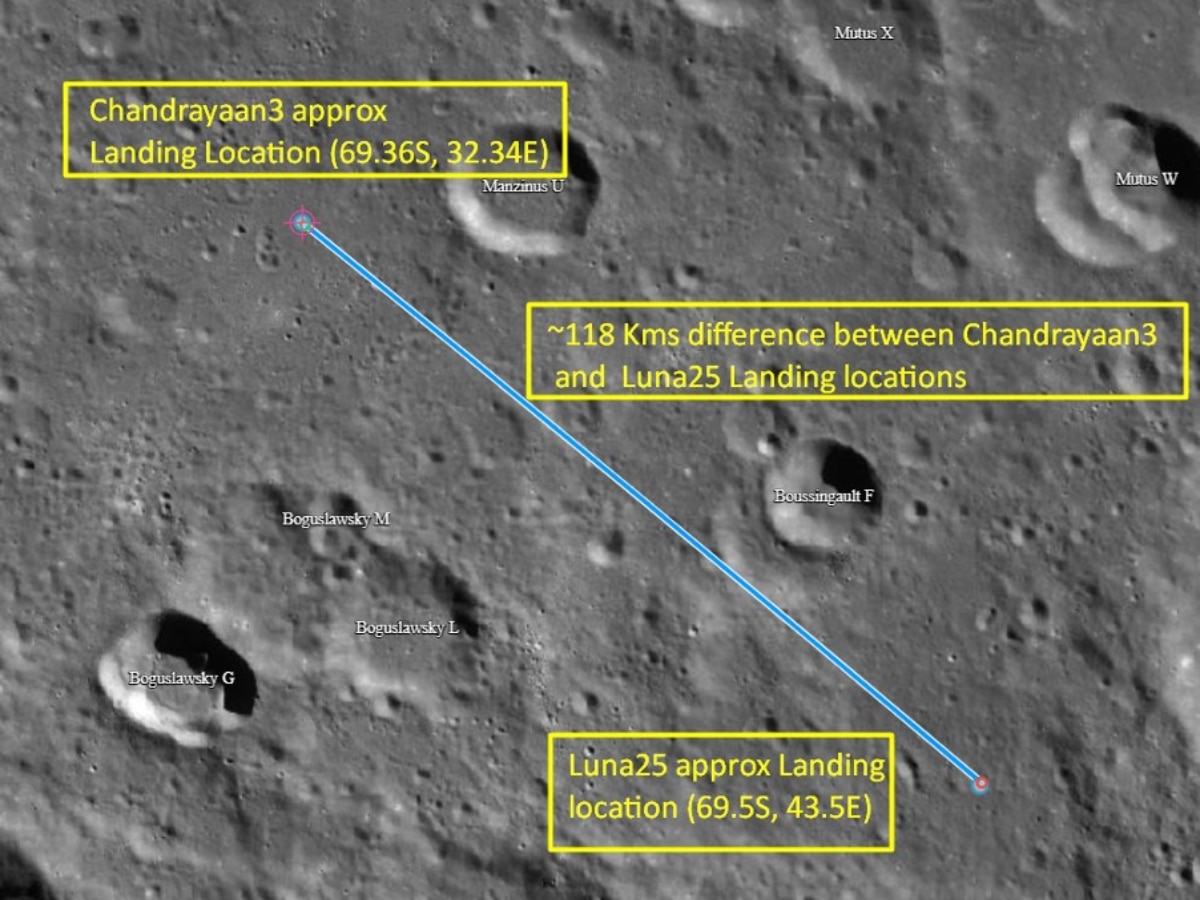[ad_1]
Luna 25, the first Soviet lunar exploration mission to be launched after 1976, began its voyage towards the Moon on August 11, 2023. It is modern Russia’s first lunar exploration, and aims to land on the Moon’s south pole. However, Luna 25 is not the only lander attempting a landing on the lunar south pole. Chandrayaan-3, the Indian Space Research Organisation’s (ISRO’s) third lunar exploration mission, was launched almost a month back, on July 14, 2023, and is expected to land on the Moon’s south pole on August 23. Chandrayaan-3 left Earth orbit on August 1, about half-a-month after launch, and entered lunar orbit on August 5.
Meanwhile, Luna 25 left Earth orbit an hour after launch, and is expected to reach lunar orbit on August 16, about 5.5 days after launch. The previous tentative landing date of Luna 25 was August 23, but after the launch, Yuri Borisov, the head of Roscosmos, announced that the lunar lander is expected to land on the Moon’s south pole on August 21.
ALSO READ | Explained: What Is Luna 25? Roscosmos Mission That May Become First Spacecraft To Land On Moon’s South Pole
Chandrayaan-3 vs Luna 25: Which spacecraft is likely to land first on the Moon’s south pole?
The country whose spacecraft lands on the Moon’s south pole first will become the first nation to achieve this feat.
A comparison between Chandrayaan-3 and Luna 25 raises a lot of questions, including why the Soviet lunar exploration mission is likely to land on the Moon earlier than India’s third lunar mission, in a shorter time frame.
ABP Live spoke to Manish Purohit, a former ISRO scientist who was involved in the Chandrayaan-2 and Mangalyaan mission, and is an expert in spacecraft solar panel technology; Dr Darshan Rana, Founder and MD of Erisha Space, a New Delhi-based space-tech firm; and Debadatta Mishra, a former ISRO scientist, and co-founder of Erisha Space, to know which spacecraft is likely to land on the Moon’s south pole first, and why, and whether there are any chances of the two spacecraft colliding.
Luna 25 is likely to land on the Moon before Chandrayaan-3, the experts said.
According to Purohit, the possible dates for the landing of Luna 25 range from August 21 to 23, which are the 10th and 12th days of the mission, respectively.
Luna 25 will spend between three and seven days in lunar orbit, about 100 kilometres above the lunar surface, before attempting lunar landing. The spacecraft aims to touch down in a region of the Boguslavsky crater. The alternative sites are Manzinus and Pentland-A craters. According to NASA, the main landing site, in the lunar south pole, is at 69.545 S, 43.544 E, north of Boguslavsky crater.
Chandrayaan-3 is expected to land on the Moon at 5:47 pm IST on August 23.
“With several potential landing sites in mind, the final decision for Luna 25’s touchdown location will be influenced by the intricacies of its trajectory and the lunar terrain it encounters. As a result, the exact landing date remains undecided, with possibilities ranging from the 10th to the 12th day of its mission,” Purohit said.
Chandrayaan-3 vs Luna 25: Are the two spacecraft likely to collide?
Another point arises that since both Chandrayaan-3 and Luna 25 will be in lunar orbit at the same time, there is a possibility that the two spacecraft collide.
Explaining why there is a very low chance of any collision between Chandrayaan-3 and Luna 25, Mishra said: “Both the Indian and Russian space agencies have meticulously calculated the trajectories of the spacecraft and the landing sites of the missions have been chosen far apart from each other. Therefore, there is a very low chance of collision.”
Both Dr Rana and Mishra said that Luna 25 may land “close in timeline to Chandrayaan-3, or even earlier”.
According to Purohit, the likelihood of an in-orbit collision is also negligible. Also, it is uncertain whether both spacecraft will indeed land on the Moon on the same day. “The intriguing aspect lies in the potential synchronicity of their lunar landings. While it remains uncertain whether Luna 25 and Chandrayaan-3 will indeed grace the Moon’s surface on the same day, the likelihood of an in-orbit collision is negligible.”
Purohit also said that the primary landing site of Luna 25 is strategically located north of the Bogoslavsky crater, approximately 120 kilometres from the intended landing area of Chandrayaan-3. He also explained that optimal orbital conditions will determine whether Luna 25 lands on the Moon on August 21, 22 or 23. “Roscosmos envisions Luna 25 descending upon the Moon’s surface within the timeframe of August 21 to 23, contingent upon optimal orbital conditions.”

Purohit concluded that whether Luna 25 and Chandrayaan-3 make their lunar mark on the same day or slightly apart, their “pursuit of knowledge and exploration is an inspiring testament to our relentless curiosity”.
[ad_2]
Source link